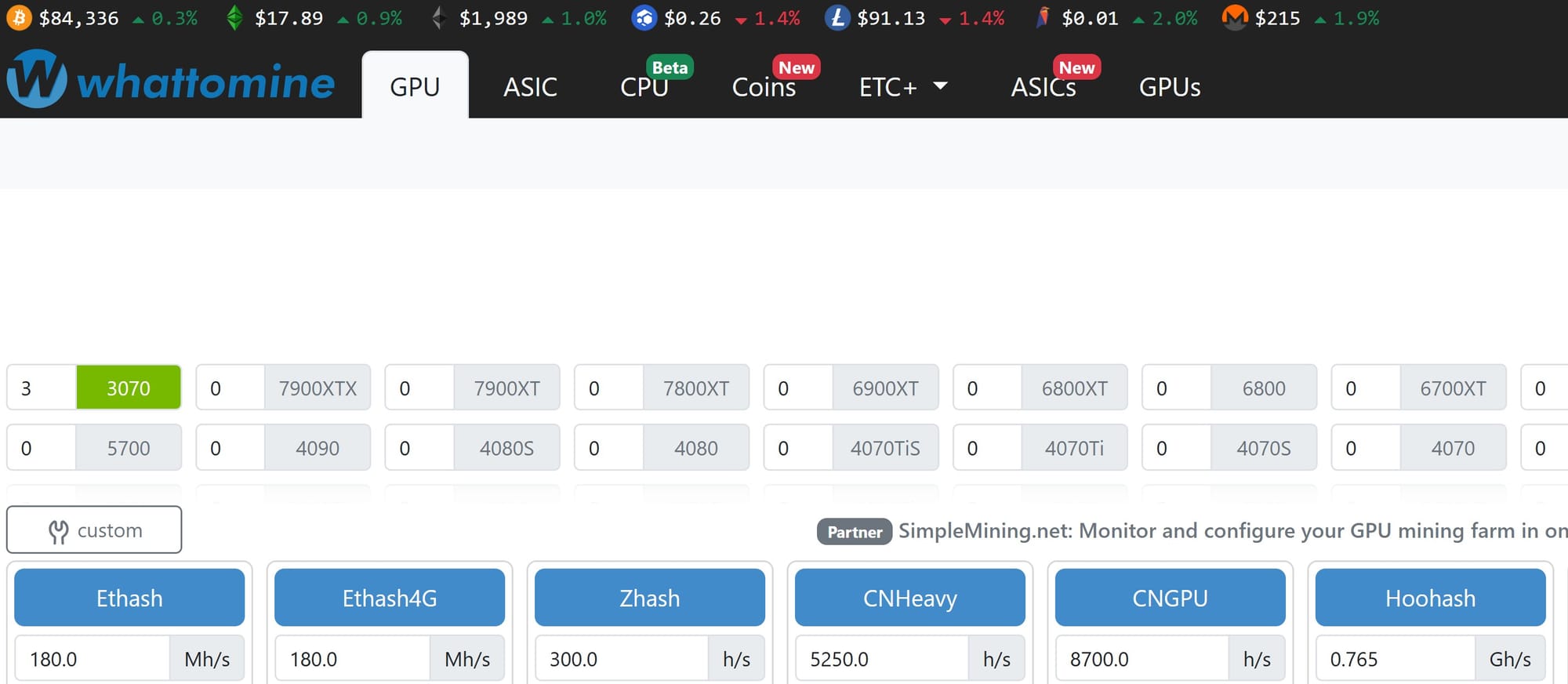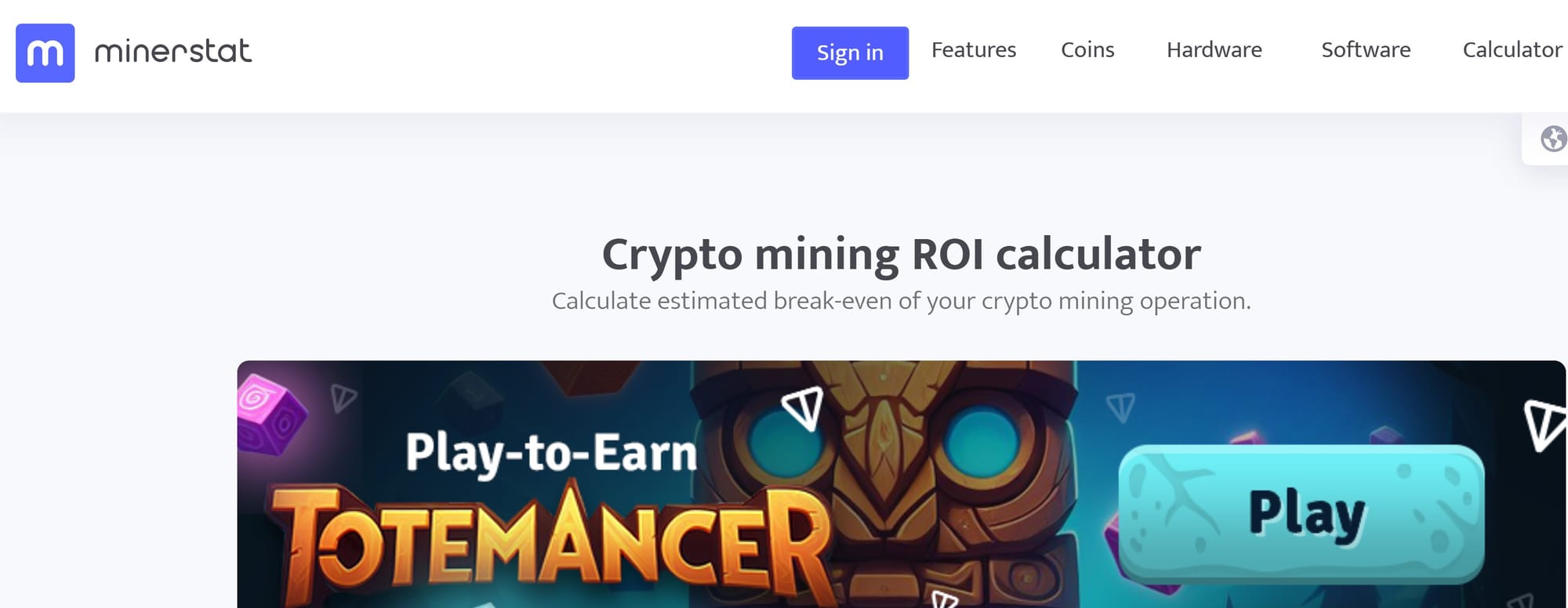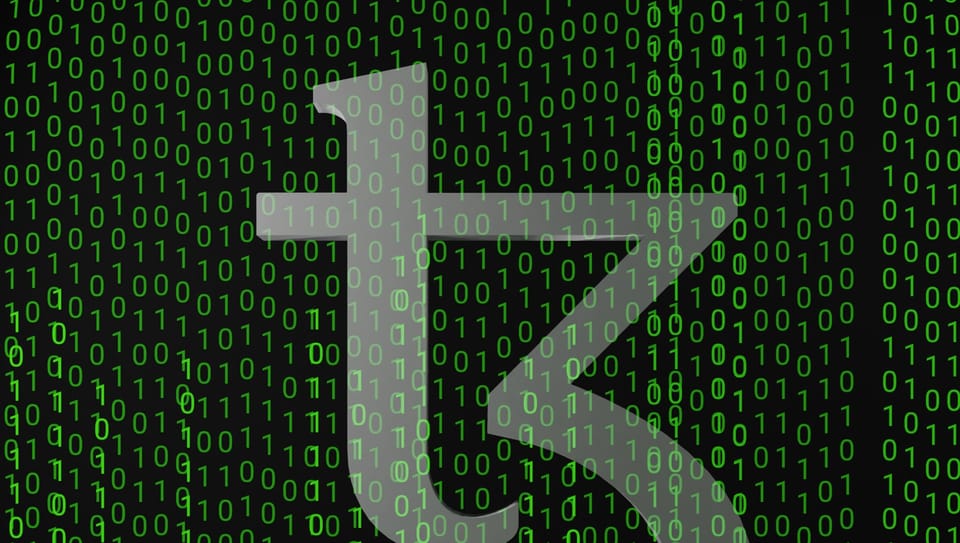How to Calculate Crypto Mining Profitability: Best Tools
Mining profits depend on more than just hardware. This guide shows how to calculate crypto mining profitability using trusted tools and smarter strategies. From energy costs to ROI calculators, you’ll learn how to plan ahead and mine with confidence.

Mining crypto isn't just about plugging in a rig and waiting for coins to drop. If you're not calculating your profitability correctly, you could end up burning more money than you make.
Hardware costs, power bills, cooling, and coin prices all shift constantly. A setup that made sense a month ago might be draining your wallet today. That’s why serious miners rely on calculators and data before every upgrade or new build.
In this guide, you'll learn how to estimate your real returns using top profitability tools. We'll also cover cost-cutting strategies that improve your ROI—whether you're running a single rig or managing multiple.
Ready to dive in? First, let’s break down the key numbers every miner should track.
Key Factors in Mining Profitability Calculations
Before choosing a coin or buying hardware, you need to understand the core elements that affect mining returns. Missing even one of these can ruin your setup’s profitability.
1. Hardware Cost and Efficiency
The upfront price of your miner is just the beginning. What matters more is how much hash power you get per watt. For example, the Antminer S21 Hydro delivers 335 TH/s at around 5,360 watts. That’s efficient—but only if you can get it at a reasonable price.
Look at:
- Cost per TH/s or MH/s
- Expected lifespan (in months or years)
- Hashrate vs. power draw
More efficient gear means fewer electricity costs per coin earned.
2. Electricity and Cooling Expenses
Electricity is your biggest ongoing expense. The same machine that earns $5 a day in Texas could lose money in California. Always check your local electricity rates before building a rig.
Best Mining Profitability Calculators
Profit margins in mining depend on accuracy. These tools help you calculate real earnings before spending a dime on hardware or electricity.
1. WhatToMine

WhatToMine is the go-to calculator for miners comparing GPU and ASIC profitability. It supports a wide list of coins and auto-updates with the latest difficulty levels and rewards. Ideal for quickly spotting which coins offer the best returns for your specific hardware.
Features
- Input hash rate, power use, and electricity cost
- Supports multiple GPUs and ASICs
- Daily profit estimates and profitability ranking
2. NiceHash Profitability Calculator

This tool from NiceHash is ideal for estimating earnings across several mining algorithms. It’s user-friendly and helps you evaluate returns based on hash power and power usage. Great for miners using the NiceHash marketplace or solo setups.
Features
- Real-time profitability per algorithm
- Auto-detects many ASIC and GPU models
- Simple interface with quick outputs
3. CoinWarz

CoinWarz offers a basic but effective calculator for Bitcoin and altcoin miners. It tracks difficulty changes, block rewards, and current prices to estimate ROI. Beginners like it for its simplicity, while advanced users appreciate its speed.
Features
- Calculates earnings by day, week, or month
- Supports over 20 major coins
- Easy comparison between coins based on difficulty
4. Minerstat ROI Calculator

Minerstat’s calculator focuses on long-term mining profitability. It’s perfect for miners who track expenses, monitor rigs, and adjust for hardware wear and utility costs. Built for those who treat mining like a business.
Features
- Detailed ROI based on hardware, power, and pool fees
- Works with multi-rig setups
- Includes profitability forecasts and alert settings
Tips to Improve Mining ROI
Even with the best calculator, your actual profits depend on smart decisions. Here are proven ways to increase your mining return on investment (ROI).
- Efficiency matters. Select mining hardware with high hash rates and low power consumption. For example, the Antminer S21 Hydro consumes less power per TH/s than many older models—making it ideal for reducing operational costs.
- Future-proof your gear. Choose equipment that supports firmware updates and remains compatible with upcoming algorithm changes. That way, you can adapt without buying all-new rigs every year.
- Choose smarter energy sources. Regions with cheaper electricity—like parts of Texas, Paraguay, or Scandinavia—offer miners a competitive edge. If possible, explore renewable sources like solar or hydro to cut long-term expenses.
- Optimize your cooling. Cooling systems can eat into your electricity budget. Use efficient airflow setups or immersion cooling to keep rigs stable without wasting energy.
Conclusion
Mining can still be profitable, but only if you treat it like a serious business. Too many new miners plug in a rig and hope for the best. That rarely leads to consistent returns. Success comes from understanding the key numbers: your hardware’s performance, power costs, network difficulty, and market timing.
You cannot rely on coin prices alone. Real profitability depends on careful planning and real-time tracking. That is why tools like WhatToMine, NiceHash, CoinWarz, and Minerstat are essential. They help you compare coins, monitor electricity costs, and calculate realistic earnings before you start mining.
If your goal is to improve your ROI, focus on efficient equipment, cheaper energy sources, and smart cooling systems. Adjust your strategy regularly. Monitor your hardware’s performance, stay updated on price shifts, and use calculators to make informed decisions.
The most successful miners track everything. They act early when performance drops or when network conditions shift. Whether you are managing a small home rig or a large operation, your mindset must be data-driven.
Mining rewards those who take the time to plan, track, and adapt. If you want long-term returns, treat mining like a system—not a gamble.
FAQs
How do mining calculators work?
Mining calculators estimate your earnings by factoring in hash rate, power consumption, electricity cost, mining difficulty, and coin price. Tools like WhatToMine or Minerstat pull live market data to give near-accurate projections.
Can I mine crypto at home profitably?
Yes, but it depends on your hardware and electricity rate. If your power is cheap and you use efficient gear, you can mine coins like Monero or Ethereum Classic. For Bitcoin, you'd need high-end ASICs to see any real returns.
Does mining difficulty impact profitability?
Absolutely. Higher difficulty means your hardware must work harder to earn rewards, reducing your daily income. That’s why tracking difficulty is critical before switching coins or investing in new rigs.
How often should I check profitability?
Daily is ideal—especially if you’re solo mining or managing several rigs. Prices and difficulty can change overnight, and staying updated helps you shift coins or adjust settings to stay profitable.




